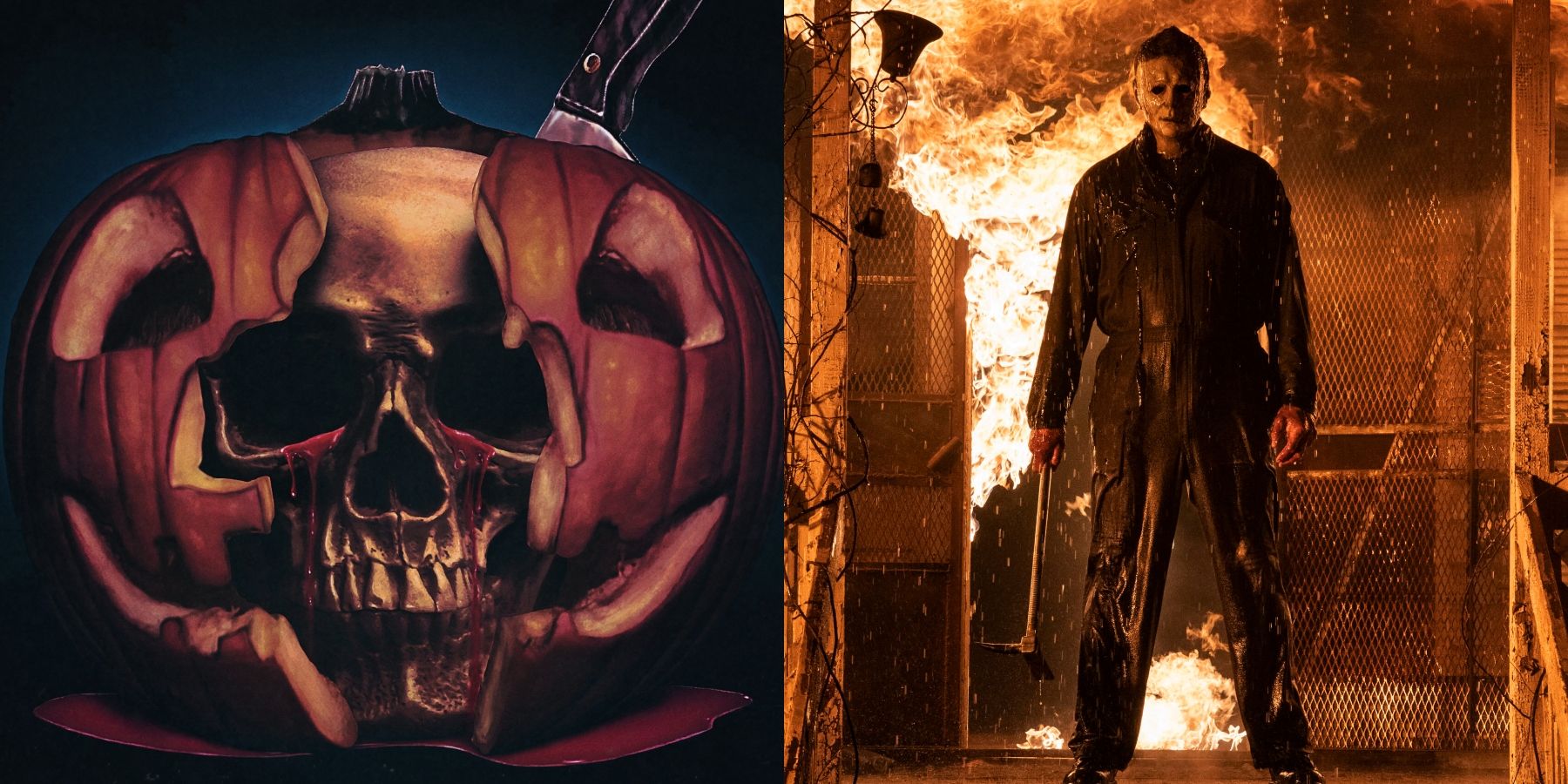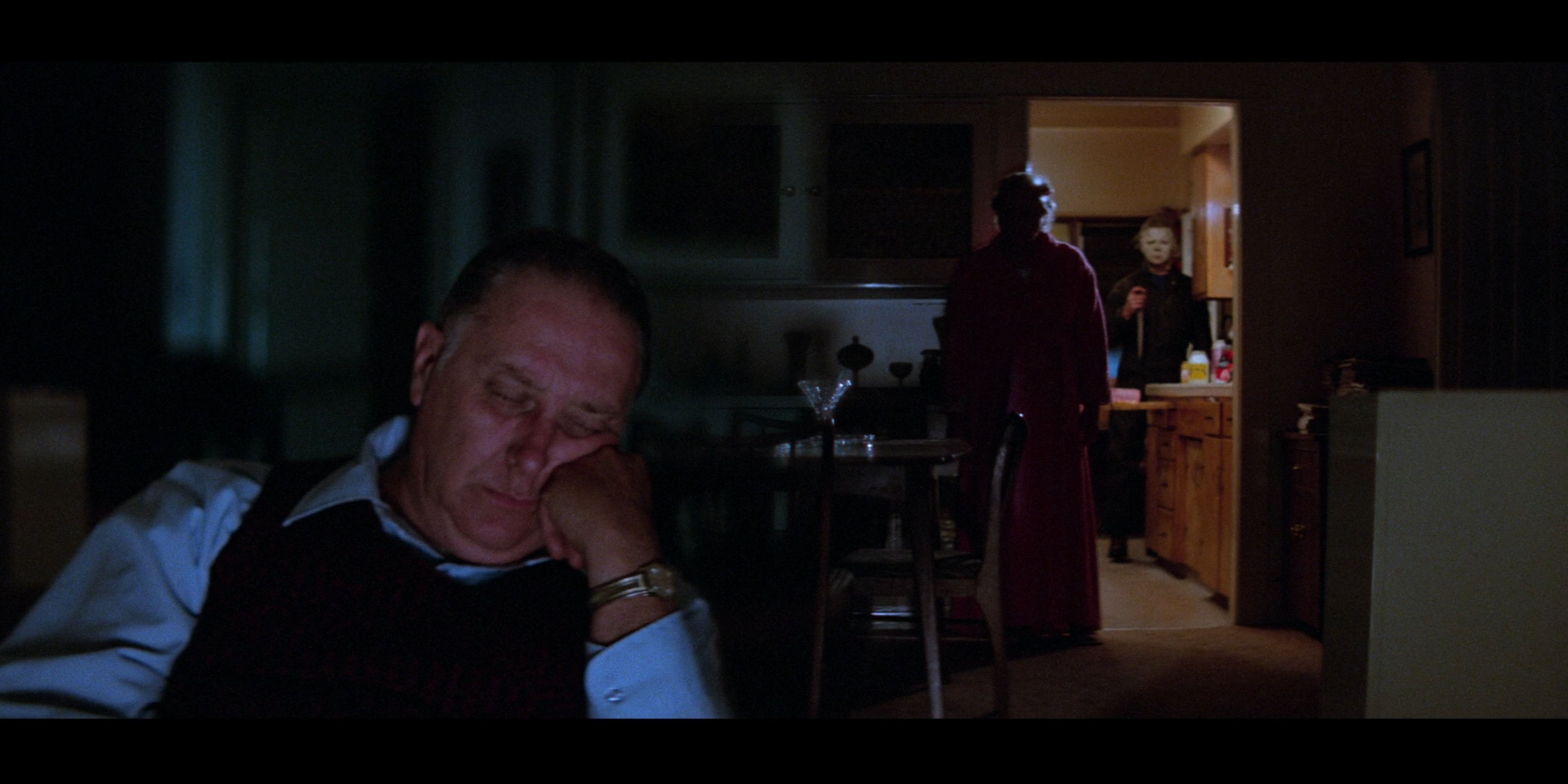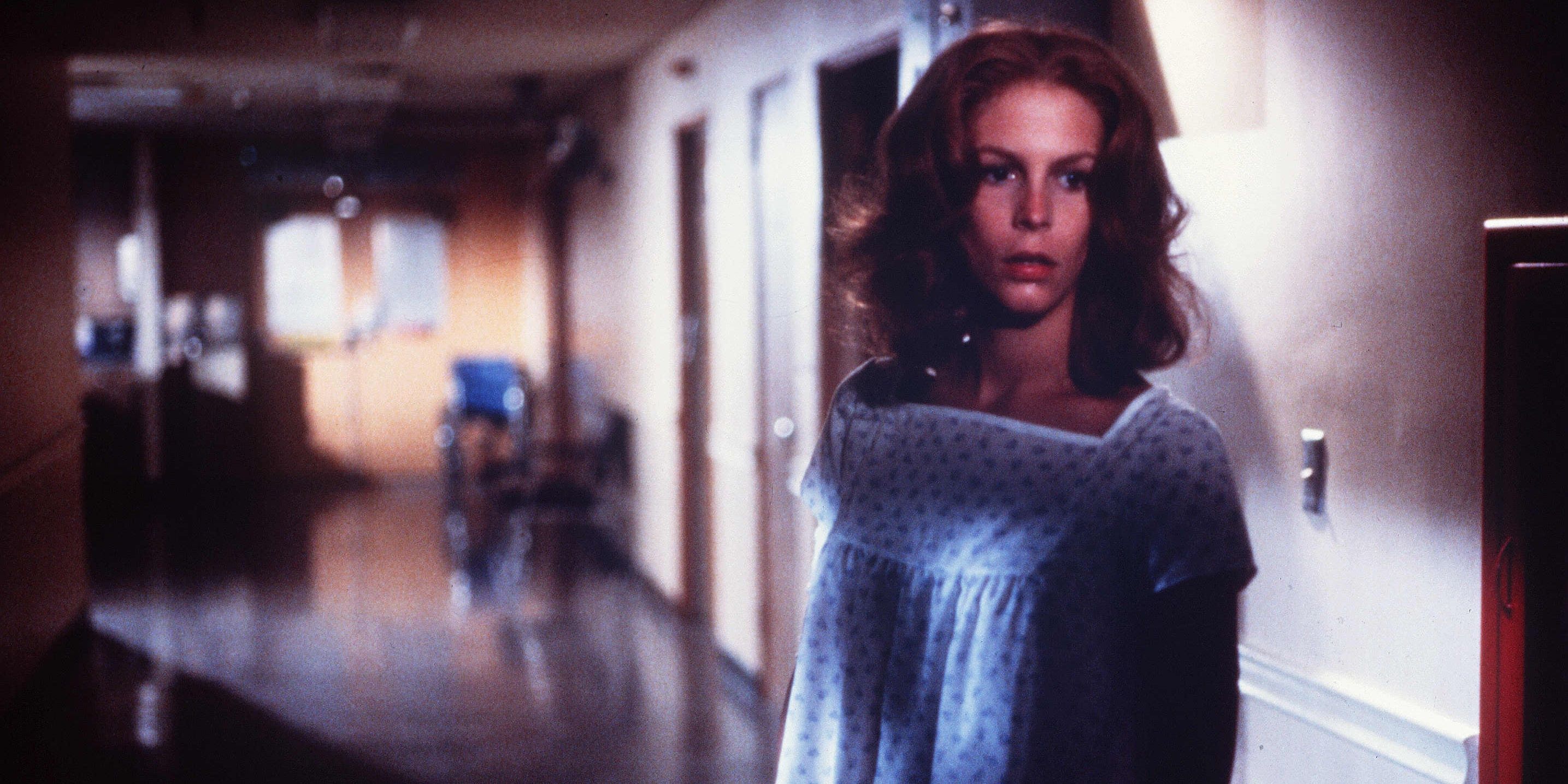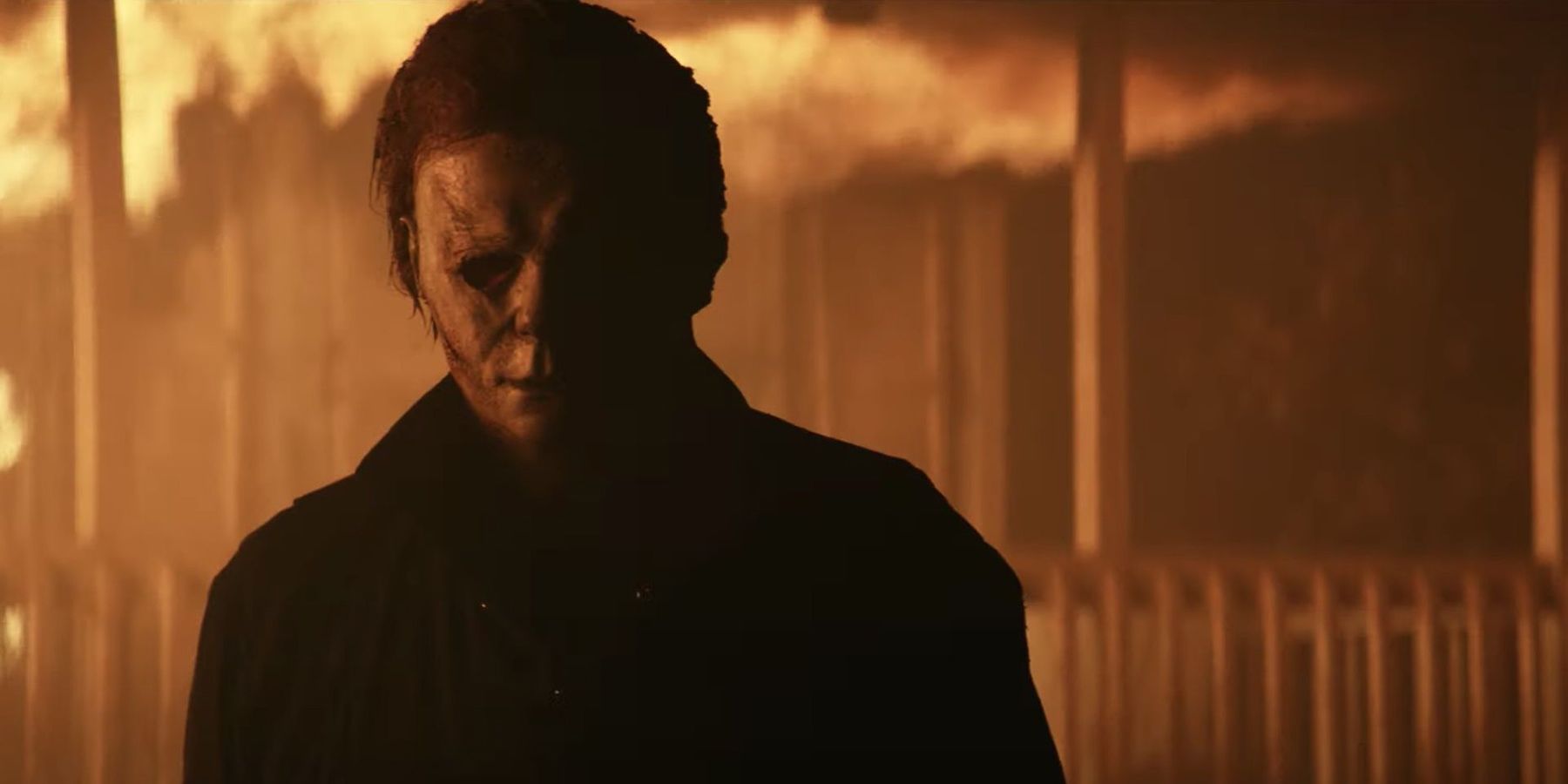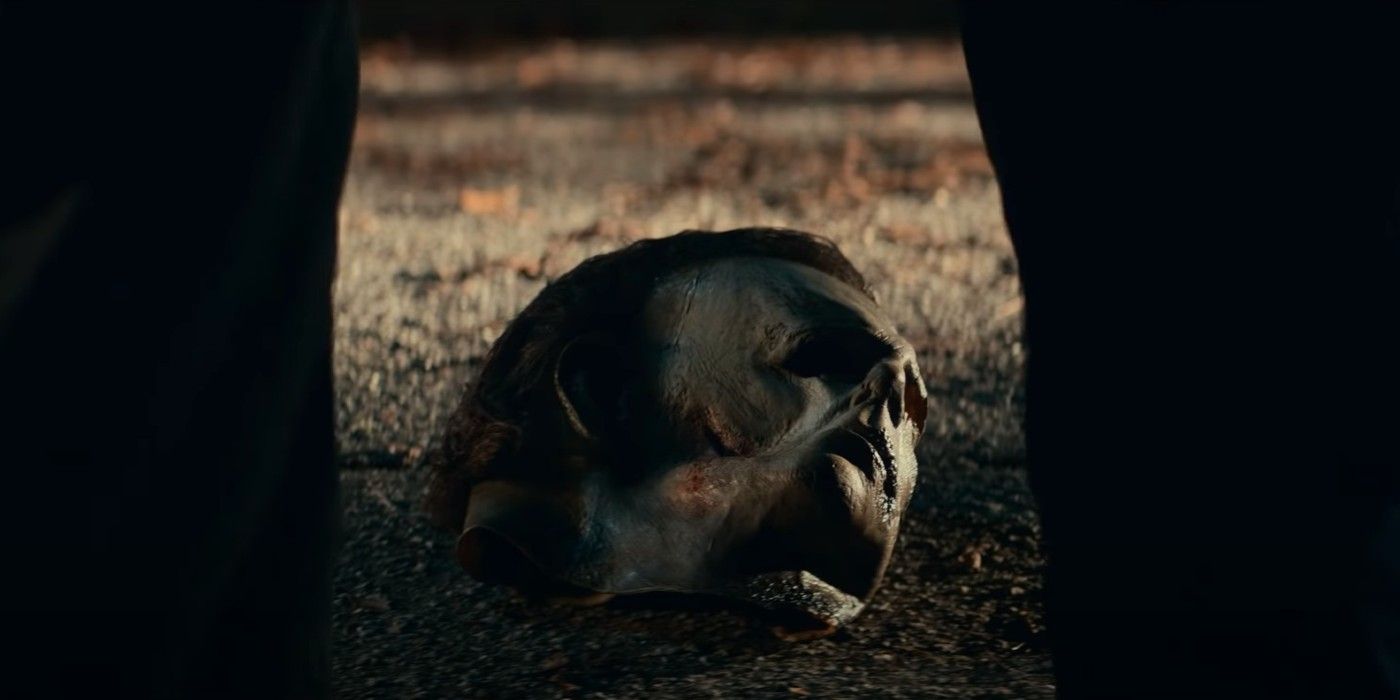This article contains spoilers for Halloween Kills.It is October, and that means one thing above all: it is Halloween season. Among the many customs associated with the holiday, one stands high atop Mount Geekdom: watching at least one film from the aptly-titled Halloween franchise.
Halloween II (1981) and Halloween Kills, the installment that is currently in theaters and streaming on Peacock, can be compared to a certain extent. The reason why they’re worth comparing is the opening scenes from both movies take place immediately after the ending scene from the preceding film, making both sequels feel episodic. This commonality aside, the films could not be much more different. But which is the more worthy sequel?
Halloween II follows the original Halloween (1978) in an extremely linear fashion. At the end of Halloween, Michael Myers is shot and falls off of a balcony, where he lays dormant. Moments later, he’s mysteriously gone. As Halloween II begins, Michael is stalking the neighborhood around his childhood home. He proceeds to hunt a wounded Laurie Strode to the hospital, butchering his way through the institution with little else but raw determination and a scalpel.
There are no flashbacks or dream sequences of any kind. Halloween II is a fairly cut-and-dry film in how to-the-point it is, and revolves squarely around Laurie Strode’s survival in the hospital. It does not have the polish or thrill-satisfying quality of the original. It is, however, much bloodier than its predecessor, as there is very little gore itself in the original film.
Halloween Kills shares this very trait with Halloween II in spades. Just reconsider the film's very name; it essentially tells audiences what to prepare for. This is especially true if you are a fan of deaths by chainsaw, fireman's axe, banister railing, or even light-bulb.
By contrast, the original Halloween had almost no blood in it whatsoever aside from the opening sequence where young Michael Myers kills his older sister. 2018’s Halloween was not exactly devoid of blood — audiences witnessed an epic boot-stomp and Michael Myers turning a policeman’s head into a Jack-O-Lantern, among other gruesome murders. However, Halloween Kills turned the violence volume to 11, in a possible nod to the Rob Zombie Halloween films from over a decade ago. At times, the film lingers for too long on its gorier moments, turning the provocative into the obvious and repetitive.
On the surface, audiences do not inhale popcorn while indulging in slasher films looking for greater meaning. To that end, Halloween II is as straight-and-narrow in narrative as it is in symbolism and deeper meaning. Michael Myers is a nearly unstoppable, and barely even slowable, brute killing force made flesh. The movie is not pretending to be anything that it is not: it is a 1980’s slasher film where the killer is hellbent on hunting down his younger sister.
The same cannot nearly be said for Halloween Kills. This is for a few different reasons. Halloween Kills has the luxury of being the 12th installment of the franchise, and it is also the second installment in a trilogy. It is uniquely positioned to draw from the best of the Halloween mythos, while discarding the less desirable bits in the trash. The fact that it is publicly known to be the middle of a trilogy also means that it does not have to reinvent the wheel, yet it can still tinker with fresh ideas to an extent.
Halloween Kills feels like a blood-soaked love letter to its loyal legion of fans and pays great homage to the films that came before it. There’s a collection of remixed ‘greatest hits’ in Halloween Kills, such as Michael Myers jumping on top of a car (hello, original film). Additionally, a trio of obnoxious trick-or-treaters don the famous witch, pumpkin, and skeleton masks from the Michael Myers-less Halloween III. Next, there is the forming of a mob to kill Michael Myers (homages to Halloween IV and Halloween V).
In a further nod to Halloween V, the mob in Halloween Kills is tragically and unforgivably responsible for the death of an innocent person that they believe to be Michael Myers. To the credit of the creative team involved, neither trailer gave this away, and the murder of the innocent man is incredibly emotive in the film. In a hugely satisfying nod to nearly every Halloween installment, Michael Myers kills someone by impaling them with a knife and lifting them off of the ground.
Then, there is the symbolism involved with Halloween Kills. After the death of the innocent man at the hands of the Haddonfield mob, one of the characters delivers a voice-over in which they essentially state that Michael Myers is not only a monster himself, but activates the monster in each of us. This would have been a powerful sentiment if Tommy Doyle, leader of the mob, had been repentant after the death of the innocent man. However, he barely paused, and continued to act in the same hot-shot manner that he had the entire rest of the film. This shows a wild lack of self-reflection and an eagerness to allow the monster inside of Tommy to 'win.'
Additionally, the film creates tension between systems and individuals. This was a smart, timely choice for the creative team involved, as there is much discussion today around the inequities and failures of systems in American life. In Halloween Kills, the movie picks on law enforcement, the hospital/healthcare system, and mental health institutions. These institutions have all come under fire in recent years, but the film’s most obvious tension is with the Haddonfield public and local law enforcement.
It is true that Haddonfield institutions have failed to fix the Michael Myers problem in any capacity for generations. However, the mob demonstrates that individuals are no more capable at being heroic, and every bit as capable of becoming what they are fighting. In this regard, the film is incredibly hollow at answering the age-old debate between order and anarchy, or security versus freedom. This leaves the sour taste of nihilism in the audience’s mouth while the film is barely halfway through its runtime.
Lastly, Halloween Kills thankfully drops the idea that Michael Myers is hunting anyone, let alone a family member. To paraphrase from the film: he is essentially a six-year-old boy in the body of a large man with the mind of a beast. That is it: there is no greater motive to carve out.
Given the advantages of time, improved techniques in cinematography, an improved story, and willingness to tackle symbolism and deeper messages, Halloween Kills is the more worthy successor. There is a lot more to say about the film because it purposefully has a lot more to say, even if some of it is hollow and nihilistic. After watching Halloween Kills and rewatching Halloween II, audiences are sure to notice the greatest difference of all that’s highlighted in the current installment: “You can’t kill the boogeyman.”
Halloween Kills is currently in theaters and streaming on Peacock.

